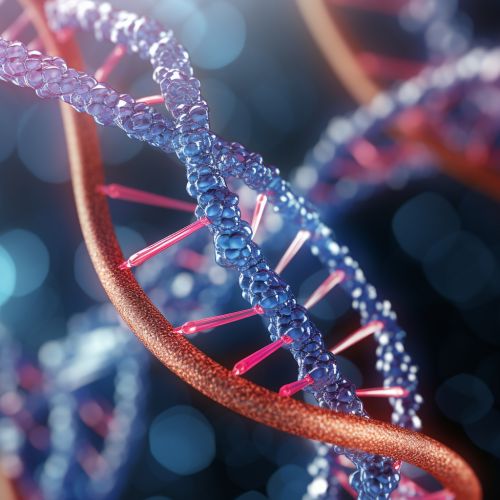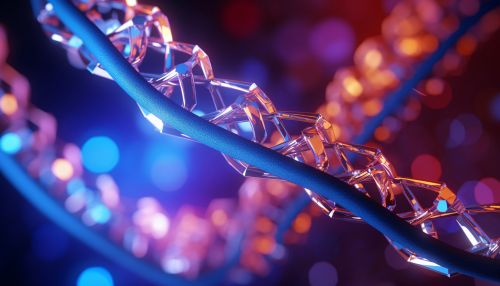DNA ligase
Introduction
DNA ligase is an essential enzyme that plays a critical role in the replication and repair of DNA. It functions by catalyzing the formation of a phosphodiester bond between the 3'-hydroxyl end of one nucleotide and the 5'-phosphate end of another, effectively sealing breaks in the DNA backbone.
Structure
DNA ligase is a large protein composed of several domains, each with a specific function. The adenylation domain is responsible for the initial step of the ligation reaction, in which an AMP molecule is attached to the enzyme. The OB-fold domain binds the DNA and brings the ends to be ligated closer together. The BRCT domain is involved in protein-protein interactions and may play a role in DNA repair pathways.


Function
The primary function of DNA ligase is to join together Okazaki fragments during DNA replication. These fragments are short, newly synthesized DNA strands that are created on the lagging strand during replication. DNA ligase seals the gaps between these fragments, creating a continuous DNA strand.
In addition to its role in DNA replication, DNA ligase is also involved in DNA repair. When DNA is damaged, for example by UV radiation or chemical mutagens, it can cause breaks in the DNA backbone. DNA ligase is one of the enzymes involved in repairing these breaks, ensuring the integrity of the genetic material.
Mechanism
The mechanism of action of DNA ligase involves three main steps: adenylation, DNA binding, and ligation. In the adenylation step, the enzyme reacts with ATP to form a covalent bond with AMP, releasing pyrophosphate. In the DNA binding step, the enzyme binds to the nick in the DNA and positions the 5'-phosphate and 3'-hydroxyl ends for ligation. In the ligation step, the AMP is transferred to the 5'-phosphate end of the DNA, and a new phosphodiester bond is formed between the 3'-hydroxyl and 5'-phosphate ends, sealing the nick in the DNA.
Types of DNA Ligases
There are several types of DNA ligases, each with their own specific functions and characteristics. These include DNA ligase I, which is involved in DNA replication and repair; DNA ligase III, which is involved in DNA repair and recombination; and DNA ligase IV, which is involved in non-homologous end joining, a process that repairs double-strand breaks in DNA.
Applications
DNA ligase has several applications in molecular biology and genetic engineering. It is used in the laboratory to join together DNA fragments in a process called ligation, which is a crucial step in many techniques such as PCR, cloning, and DNA sequencing. DNA ligase is also used in the detection of specific DNA sequences in a technique called ligase chain reaction.
